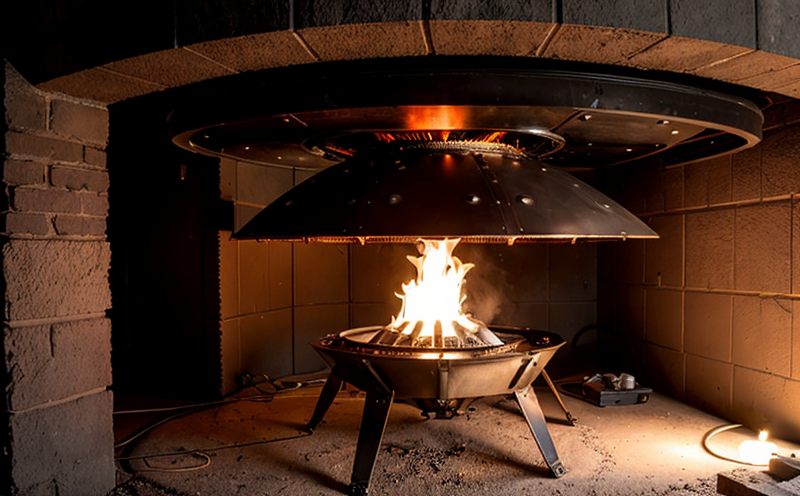Fire Damper Inspection and Testing
In today’s world, fire safety is paramount. Fire dampers play a crucial role in safeguarding buildings by preventing the spread of smoke and flames from one area to another during a fire. Regular inspection and testing are essential to ensure these devices function correctly when needed. This service ensures that fire dampers meet all relevant standards and specifications, thereby protecting lives and property.
Fire dampers are installed in ventilation systems to close automatically upon the activation of a smoke detector or heat sensor, preventing the spread of smoke and fire through ductwork. The integrity of these devices cannot be overstated; they must operate flawlessly during emergencies. Proper inspection and testing not only ensure compliance with building codes but also enhance overall safety.
The process involves several key steps: identifying critical areas where dampers are required, assessing the condition of existing dampers, conducting functional tests under simulated fire conditions, and finally documenting findings comprehensively. Compliance with international standards such as ISO 19650-2 and NFPA 211 is mandatory for accurate results.
Our team uses advanced diagnostic tools to evaluate each damper's performance meticulously. These inspections help identify potential issues early on, allowing for timely repairs or replacements if necessary. By adhering strictly to prescribed methods outlined in relevant codes like ASHRAE 58-2019, we ensure accuracy and reliability.
Regular maintenance of fire dampers contributes significantly to reducing the risk associated with accidental fires within facilities. It helps maintain the structural integrity and operational efficiency of HVAC systems while ensuring that all components work together seamlessly during critical moments.
A proactive approach towards inspecting and testing fire dampers can prevent costly damages caused by uncontrolled spread of smoke and flames across different parts of a building. Early detection also allows for more effective resource allocation in case of an actual emergency situation, thus saving valuable time and resources.
Moreover, these services contribute positively to the overall reputation of any organization by demonstrating its commitment to safety standards. This not only builds trust among stakeholders but also fosters a culture of continuous improvement within the company.
Why It Matters
The importance of inspecting and testing fire dampers cannot be overstated, especially in large commercial buildings or industrial complexes where rapid spread of fires could lead to catastrophic consequences. Proper maintenance ensures that these vital components remain operational during emergencies.
- Protect Lives: Fire dampers help contain the spread of smoke and flames within a building, providing valuable time for evacuation.
- Avoid Damage: By preventing the unchecked expansion of fires through ventilation systems, significant structural damage can be avoided.
- Meet Regulations: Compliance with local fire codes and international standards is crucial to avoid legal penalties and ensure safety.
- Enhance Reputation: Demonstrating a commitment to high safety standards fosters trust among clients and stakeholders.
In summary, investing in regular inspections and tests for fire dampers provides peace of mind knowing that critical pathways are secure against potential hazards. This proactive measure supports long-term sustainability by minimizing risks associated with accidental fires.
Scope and Methodology
| Aspect | Description |
|---|---|
| Identification of Critical Areas: | Determine locations requiring fire dampers based on design drawings and local regulations. |
| Evaluation of Existing Dampers: | Assess the current state of installed fire dampers through visual inspection and functional checks. |
| Functional Testing Under Simulated Fire Conditions: | Simulate real-world scenarios using controlled burns to test damper closure mechanisms. |
| Detailed Documentation: | Record all findings accurately, including any deficiencies identified during inspection and testing. |
The methodology employed follows stringent guidelines provided by recognized authorities such as ASHRAE 58-2019 and NFPA 211. Each step is carried out methodically to ensure thoroughness and reliability of results.
Benefits
- Enhanced Safety: Ensures that fire dampers perform optimally during emergencies, protecting occupants effectively.
- Cost Savings: Early detection and repair of issues prevent costly replacements and damage to property.
- Licensed Compliance: Adherence to local fire codes reduces the risk of legal penalties associated with non-compliance.
- Better Reputation: Demonstrates a commitment to maintaining high safety standards, enhancing organizational reputation.
A proactive approach towards inspecting and testing fire dampers not only supports immediate safety but also contributes to sustainable practices by minimizing risks linked to accidental fires. This ensures that all critical pathways are secure against potential hazards, providing peace of mind for everyone involved.





